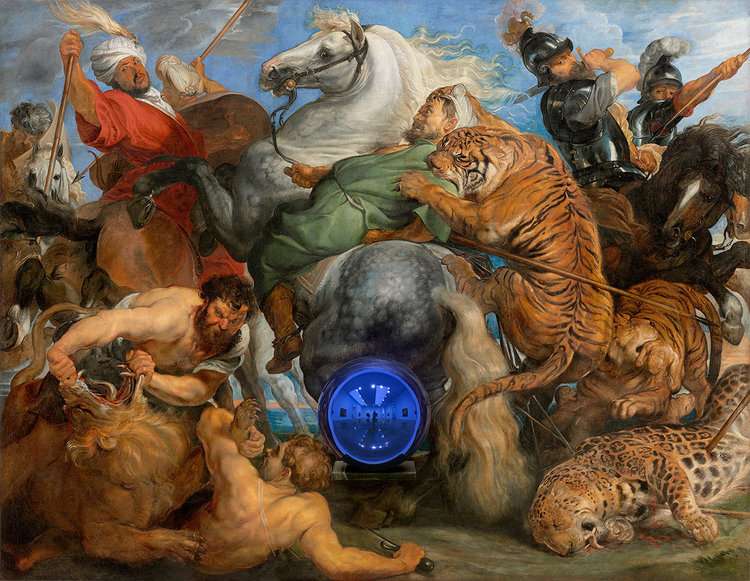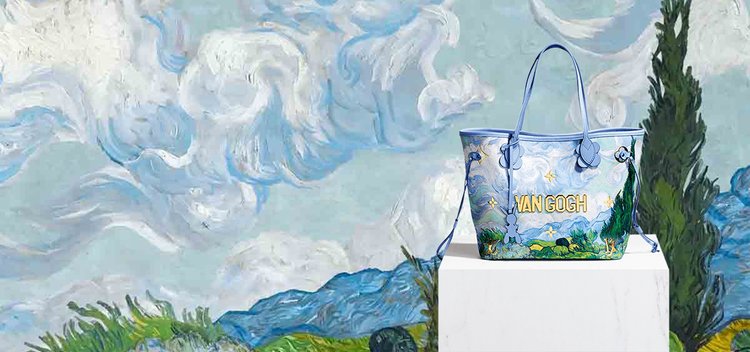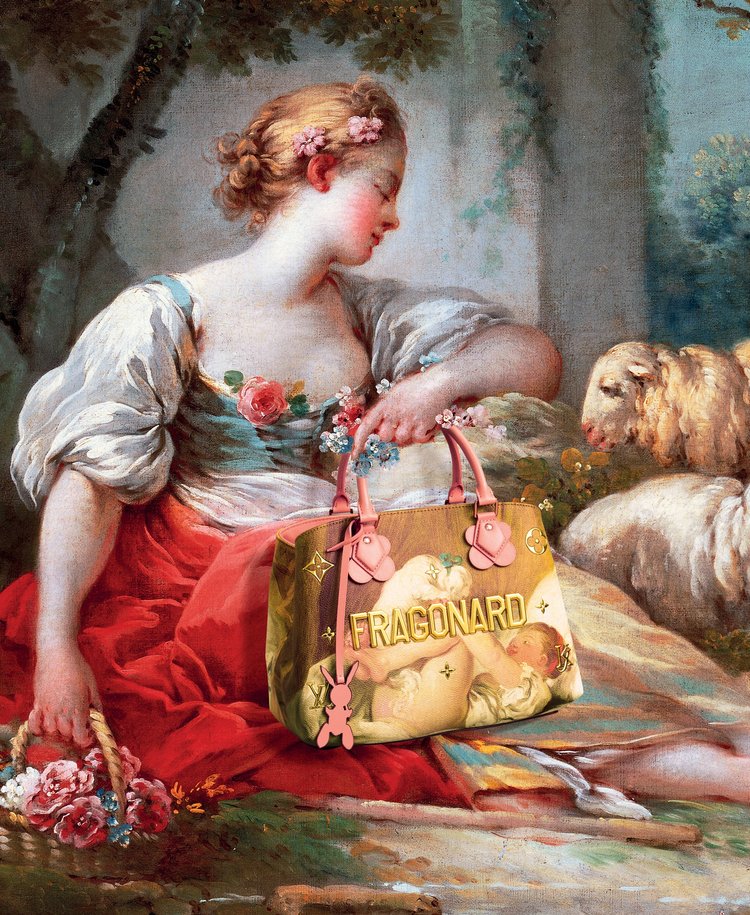Riposte | Jeff Koons X Louis Vuitton
Each fortnight, HeadStuff brings an unadulterated critique of the global art scene.
Jeff Koons is famous for turning kitsch ephemera like balloon dogs and imagery from drinks adverts into art. His retrospective at Paris’s Pompidou Centre was the most successful in the museum’s history, with more than 650,000 visitors. In 2013, a 10ft version of one of his steel “balloon dog” sculptures sold for $58m.
Koons has brought his imagery from his long-standing ‘Gazing Ball’ paintings- a series of large-scale hand painted reproductions of works by the Old masters- to a range of Louis Vuitton products. He has exhibited the ‘Gazing Balls’ before, in 2013, in which these coloured spheres were shelved closely in front of the reproductions of Rubens, Da Vinci and Titian. One also features on the cover of Lady Gaga’s 2013 album ArtPop, in a work commissioned by the singer. “The ‘Gazing Ball’ paintings were really about finding an appreciation for things that came before us, of things outside the self,” says Koons.

Now, these appropriations of art history are featured on Louis Vuitton leather goods, from a key chain (€585) to a tote bag or backpack (€4000). The names of the artists are in reflective type, in a way performing the function of the gazing ball in the ‘Gazing Ball’ paintings. ‘I wanted them to become art- I believe that these bags are art.’
This is not Louis Vuitton’s first endeavor into artist collaborations. Previous collections have partnered with The Chapman Brothers, Cindy Sherman, Yayoi Kusama, Richard Prince, Takahashi Murakami and Stephen Sprouse.

Looking for the first time at these objects, I think the whole thing must be a joke, a clever enough little joke about the ridiculous custom of buying branded products. These undeniably clumsy and unattractive objects with their ridiculous excess of screaming signatures are pretty funny. If it’s a joke, I get it. They might be objects where play has been made manifest.
But then I read, “By re-presenting these celebrated pieces on Louis Vuitton bags, Koons once again invites viewers to consider these works anew, opening the museum to the world and encouraging us to experience the old masters in novel ways.” Surely nobody buys into this? But of course, that’s the whole point, buying in. And, as ever, it doesn’t matter what it is you’re buying into. I’m afraid “opening the museum to the world” is not what Koons is doing here. This is not some altruistic democratisation of the art world. This is business. Repressing a gag, I’d like, at this stage, to point out that the asking price for these bags is up to £3000… “opening the museum to the world”, “giving the world at large a chance to buy into the work of some of the most seminal artists of our times”. Whose world would that be?
Here is a question worth raising, perhaps: what is the difference between these and the sort of merchandise you buy in the gift shop of an art museum? They certainly look like merchandise, if a bit tackier than most. The main differences have to do with labelling: that is, price labels, and brand labels. I’m no advocate for museum merchandise: the whole “exit-through-the-gift-shop” culture, and the supply and demand of/for shopping opportunities everywhere you go, no matter how sacred. I can’t help being irritated as artworks that have, as I spent time with them, helped me develop how I think about something important, have been turned into novelty tea-towels. But at least most of those who buy these things do so because they liked something of the art they have seen for whatever reason, want to remember that they liked it, or want to bring something home from their experience of seeing something new. After all, are we not conditioned to express ourselves through shopping? (Isn’t that why Pop-art worked?) I believe so. And for this reason I’m willing to forgive the Monet biscuit tins and Kandinsky scarves.

But these Koons-Vuitton handbags go beyond such minor offences. Although Jonathan Jones states that “these luxury objects look to [him] like heartfelt homages to great art”, I would be inclined to say that they pay as much homage to the masterworks they as a fur shawl pays to a fox. I appreciate that appropriation has played an important role in art throughout the 20th and 21st century, and take no issue with this as a method. The problem I have with these fashion items is that they don’t seem to achieve anything, either for art or human beings, by way of their appropriation. Maybe in this I’m being a little narrow minded; maybe scattering fragments of Rubens’ and Fragonards, alongside their names spelled out in massive, unmissable lettering, through fashion magazines and shop windows, on high-street and online, will bring them and their work to the attention of some who know nothing of it.
But what sort of attention will this be? My guess is that in most cases it will be one or both of two things: fleeting, or damaging. In the first instance, the images will likely be gobbled up and quickly mentally disposed of, much like how we process so many of those we scroll through in our daily lives of too-much-information. In the second instance, when the attention is damaging, it will be the sort that consolidates a problematic association between art and money, which many contemporary art practitioners have been giving their all to fighting for a long time. Why the idea is floating about that these luxury products are what could make art accessible and available to wider audience today, as oppose to our national museums, so many of which offer free entry in the UK and Ireland and function as potential sanctuaries for people of all backgrounds, I do not understand. It might simply be down to the sad fact that we are, for the most part, better at shopping than looking.
